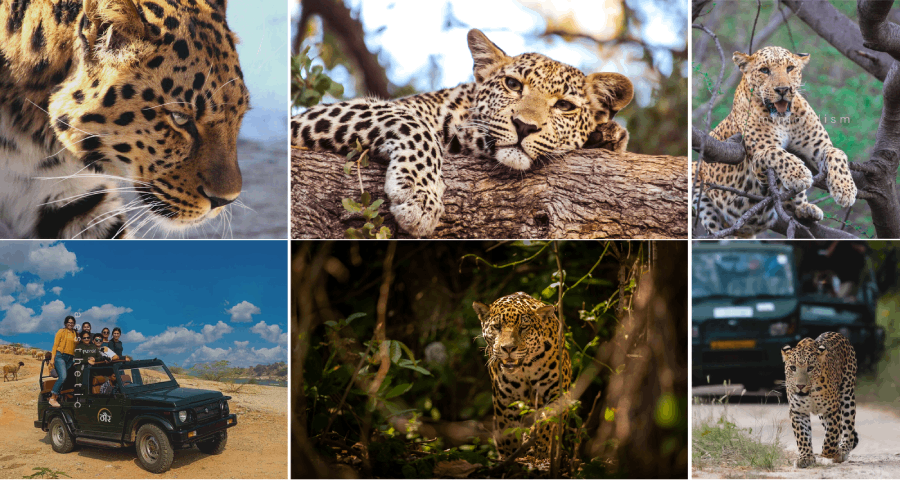Flora
The topography of Sariska National Park is mostly arid, with thorny scrubs covering the rocky patches of the park. It also has small patches of dry deciduous forest and grasslands. It is estimated that there are nearly 300 species of vegetation found in and around the Sariska reserve forest. Approximately 75% of the park's area is covered with "Dhok" (Anogeissus Pendula), an active fodder tree that supports the huge herbivore populations of the park. Other primary trees in the park include Palm (Arecaceae), Pipal (Ficus religiosa), Banyan (Ficus bengalensis), Neem (Azadirachta indica), Mango (Mangifera indica), Gular (Ficus glomerata), Ber (Zizyphus mauritania), Khair (Acacia catechu), Dhak (Butea monosperma), Reonj (Acacia leucophloea), Babul (Acacia nilotica), Gum (Sterculia urens), etc.
Fauna
The main attraction of the park is its apex predators, the tigers. Tiger sightings in Sariska Tiger Reserve have improved considerably over the past 5 years. Apart from tigers, the park is also famous for leopard sightings and other mammal species. Over 25 mammal species are recorded here, including the striped hyena, golden jackal, desert fox, jungle cat, rusty spotted cat, palm civets, hedgehogs, porcupines, mongoose, hare, rhesus macaque, spotted deer, sambhar deer, blue bull, etc. Over 220 bird species (resident and migratory) have been recorded here, making it a hub for avid birdwatchers. The safari drive will take you around the Aravallis with glimpses of its inhabitants. The guides and naturalists associated with the park live near the park's periphery and have an excellent understanding of the jungle.







